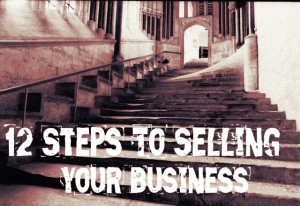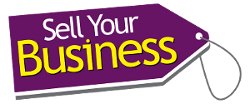
 Twelve Steps to Selling Your Business.
Twelve Steps to Selling Your Business.
The business sale process is quite straightforward. Provided you’ve prepared for the sale, the journey can be a fun adventure. Listed below are the 12 steps that take over after the preparation stage is complete. These steps also assume that your business sale team is in place. The core team members include a business broker (corporate financier), accountant, corporate solicitor and personal tax/financial advisors. At the end of this process the ideal outcome is to pop the champagne and celebrate a successful completion and business exit.
- Create a list of buyers. Your broker will help you brainstorm a large list of potential buyers. To increase the chances for success the larger the list the better. As with any negotiation, competition helps to increase desire and with increased desire comes higher offers.
- Create the teaser letter and prepare for issuing. Your broker will create this for you. This is a short letter outlining the broad opportunity. It explains the type of business, top-level figures like profits and revenue in addition to reasons for sale and overall opportunity. At this stage your company won’t be named.
- A potential buyer expresses interest. After receipt of the teaser letter, interested parties will get in touch with your broker to express a desire for more information.
- Get a Non-Disclosure Agreement (NDA) signed by any interested party. Before your broker tells the interested parties your company name or any more details, a NDA agreement will be signed. This is a legal document that aims to ensure the interested parties keep all materials and information related to the opportunity confidential.
- Send the Memorandum of Information (MOI) to any interested parties. The MOI will be written by your broker and is similar to a business plan. It should be around 20 pages long and showcases your business in the best light possible. The document will include your business history, organisational structure, employee bios, shareholdings, customer and markets, sales and marketing, product and service descriptions in addition to financials.
- Potential buyer proceeds or drops out. During this step your broker will be contacting all interested parties to determine if they’re interested in proceeding.
- Meet the potential buyer face-to-face and give a presentation. This important meeting is often held at your broker’s office or a venue off-site. Generally, the presentation is another version of the MOI spread out into around 10 – 15 slides. Presentations are often targeted to last for a half hour and then open up for discussion.
- Indicative offers received. After the presentation stage, your broker will filter through offers. It’s very important to have your personal tax advisor/financial advisor on hand during this stage. Some offers look great but may actually leave you worse off than others.
- Shortlist potential buyers. Hopefully you’re flooded with offers and are able to easily shortlist the potential buyers to a few that seem most appropriate for the business. Eventually, you’ll need to choose one and proceed through to completion. Most buyers will ask for exclusivity at this point as they don’t want to pay the price of due diligence only to lose the sale.
- Due diligence is performed. The potential buyers will have teams of people scouring your business to uncover every detail. The process isn’t finished until every stone is unturned. You’ll find yourself filling out spreadsheet questionnaires from one buyers’ department only to be asked the same questions from another team.
- Final offer letter(s) are issued. Provided that you are prepared, disclosed any issues upfront and are maintaining forecasted figures your offer shouldn’t be too far from the indicative offers provided in step eight.
- Completion. For the final stage you and your team will meet at the buyers’ solicitors office. There’s usually several rooms put aside. One room for signing, one for the buyers’ team and one for your team. There will also be rooms for negotiation and another room for private conversations. If all goes well, the papers are all signed and you finish the day with a celebratory glass of bubbly!
This process can progress smoothly. It can also cause your life to be a living nightmare. The best thing you can do is prepare, prepare, prepare. Find out what you need to do to make sure your business will get the highest valuation and ensure the sale process goes as smoothly as possible. Download your FREE chapter and get started today: “How To Sell A Business: The #1 guide to maximising your company value and achieving a quick business sale – FREE CHAPTER.”
Kim Brown, Co-Founder of Business Wand, helps business owners navigate their way through the start to finish process of selling a business. Her specialty is to help owners cut costs and increase profits prior to sale. To understand how you can sell your business quickly for the highest sales price, purchase the book, “How To Sell A Business: The #1 guide to maximising your company value and achieving a quick business sale”
